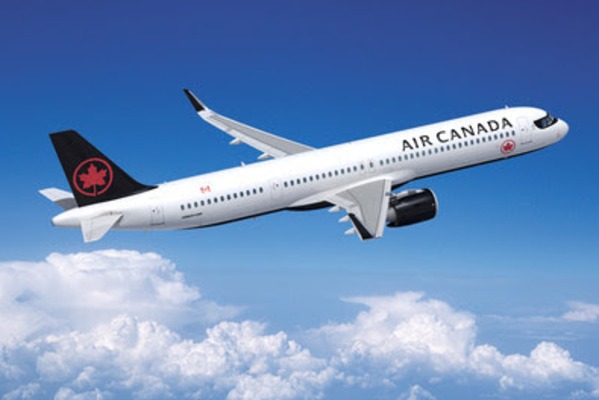Air Canada Reports Q2 Results

Air Canada has reported its second quarter 2022 financial results, with Michael Rousseau, President and Chief Executive Officer of Air Canada, observing that: “The past three months have been very challenging for our company, our employees, and customers from an operational perspective. The path to recovery from any serious event is rarely straight and easy. I thank our employees for their incredibly hard work, demonstrated professionalism and commitment as we safely transported over 9.1 million customers in the quarter, nearly 8 million more than the second quarter of 2021 or about 70% of total customers carried in the full year 2021.”
Rousseau continued: “The industry worldwide is facing unprecedented conditions as it emerges from pandemic-related restrictions. The situation is particularly challenging in Canada, where we have gone from a near two-year shutdown of air travel to rebuilding our capacity back to close to 80% of 2019 levels in just a few months. Despite meticulous planning and projecting, participants involved in the air transport system are facing significant pressure in restarting. We continue to work together to restore the travel experience to expectations and are encouraged by recent improvements.”

Rousseau said that: “From a financial perspective, we are pleased with our results as we generated $154-million of EBITDA in the quarter, a significant increase from a negative quarterly EBITDA of $656 million a year ago, and operating revenues neared $4 billion in the quarter, an improvement of about $3.1 billion from the second quarter of 2021. Compared to pre-pandemic levels, 2022 second quarter advance ticket sales reached 94% of those in the same quarter of 2019. In the second quarter, our operating capacity, measured by available seat miles, was 73% of the same quarter in 2019, and despite the lower capacity, passenger revenues were 80% of those generated in the second quarter of 2019, driven by higher yields.”
Air Canada’s boss said that: “We expected travel would rebound significantly once restrictions were lifted and prepared accordingly. We entered the peak summer travel period at close to 90% of our pre-pandemic staffing levels, while prudently planning to operate approximately 80% of our pre-pandemic schedule over that period. In the second quarter of 2022, we delivered a load factor of 80.5%, representing a significant improvement from the second quarter of 2021 levels but still declined about four percentage points from the second quarter of 2019. To further support the industry’s recovery efforts and mitigate the short-term impact on customers and employees, we recently took additional steps to flatten peaks and smooth the flow of traffic, by proactively reducing our schedule over July and August.”
He said: “Finally, while many participants play a unique and essential role in the air transport system, we recognize that our customers experience these interconnected efforts as a single journey. We are working closely with our service providers and governments to keep addressing the issues aviation is facing in Canada and globally. We acknowledge the inconveniences and disruptions some of our customers have faced, and we deeply regret this. This is not business as usual for us. We thank our customers for their understanding and the loyalty they are showing to Air Canada in these unprecedented times.”
Air Canada reported the following financial results for the second quarter of 2022:
- Operating capacity, measured by Available Seat Miles (ASMs) increased about five times from the second quarter of 2021. Capacity in the second quarter was 73 per cent of the second quarter of 2019, in line with projections in Air Canada’s first quarter 2022 earnings release dated April 26, 2022.
- Passenger revenues of $3.441 billion increased about eight times from the second quarter of 2021.
- Operating revenues of $3.981 billion increased almost five times from the second quarter of 2021.
- Operating expenses of $4.234 billion increased $2.264 billion from the second quarter of 2021.
- Cost per available seat mile (CASM) decreased to 20.8 cents from the second quarter 2021 CASM of 49.3 cents.
- Adjusted cost per available seat mile (Adjusted CASM)* of 13.1 cents compared to second quarter 2021 adjusted CASM of 41.5 cents.
- Operating loss of $253 million, an improvement when compared to an operating loss of $1.133 billion in the second quarter of 2021.
- EBITDA* (excluding special items) or earnings before interest, taxes, depreciation, and amortization of $154 million, better than the negative EBITDA of $656 million in the second quarter of 2021.
- Net loss of $386 million or $1.60 per diluted share compared to a net loss of $1.165 billion or $3.31 per diluted share in the second quarter of 2021.
- Cash from operations of $1.077 billion compared to cash used in operations of $1.377 billion in the second quarter of 2021. This improvement of $2.454 billion was driven by better operating results and strong advance ticket sales in the second quarter of 2022, and considers the refund of eligible non-refundable tickets, which amounted to $997 million in the second quarter of 2021.
- EBITDA (excluding special items), EBITDA margin, adjusted pre-tax income (loss), free cash flow, net debt, and adjusted CASM (discussed in this news release) are non-GAAP financial measures, non-GAAP ratios, or supplemental financial measures. Such measures are not recognized measures for financial statement presentation under GAAP, do not have standardized meanings, may not be comparable to similar measures presented by other entities and should not be considered a substitute for or superior to GAAP results. Refer to the “Non-GAAP Financial Measures” section of this news release for descriptions of Air Canada non-GAAP financial measures, non-GAAP ratios, and supplemental financial measures, and for a reconciliation of Air Canada non-GAAP measures used in this news release to the most comparable GAAP financial measure.


